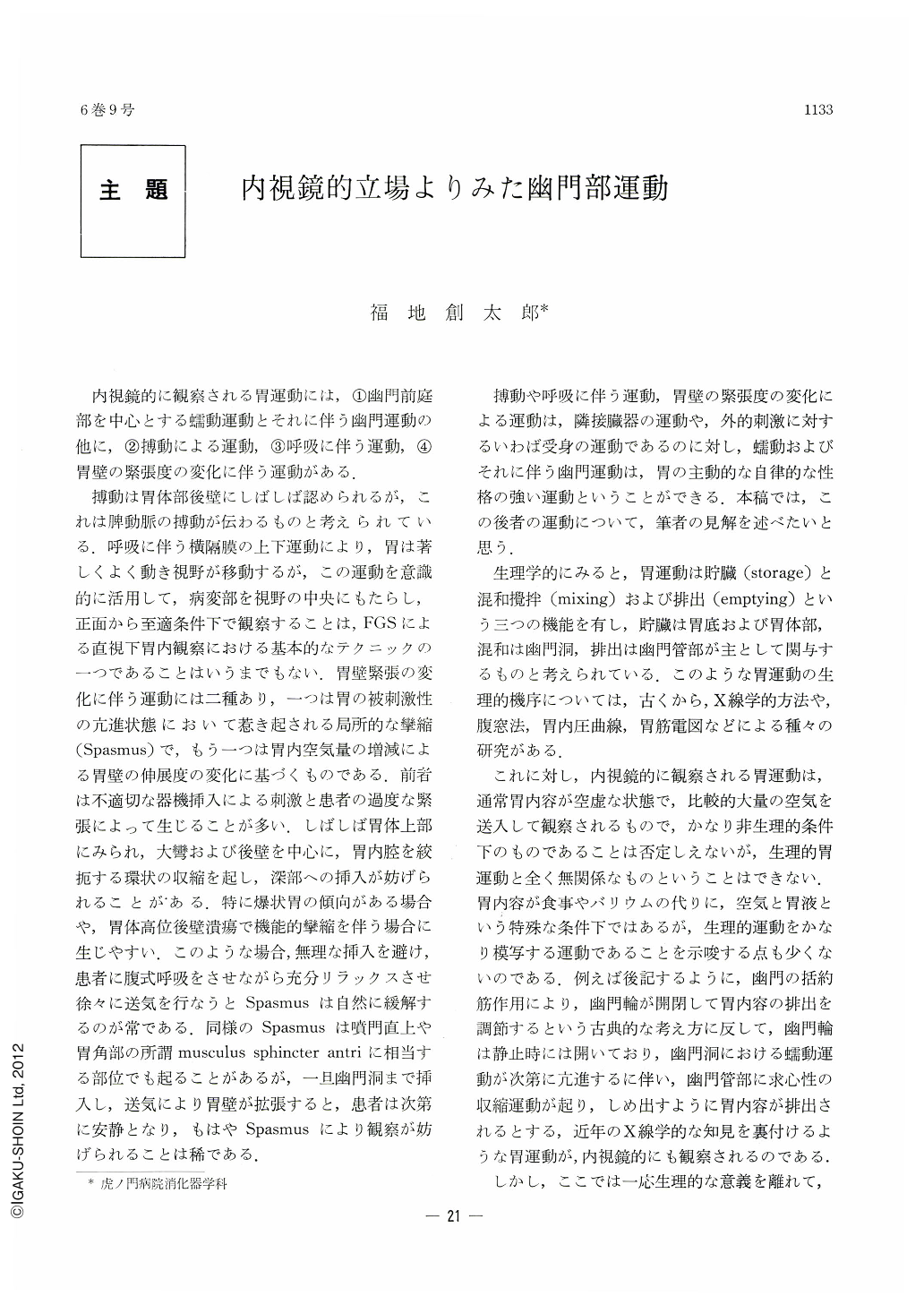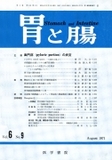Japanese
English
- 有料閲覧
- Abstract 文献概要
- 1ページ目 Look Inside
内視鏡的に観察される胃運動には,①幽門前庭部を中心とする蠕動運動とそれに伴う幽門運動の他に,②搏動による運動,③呼吸に伴う運動,④胃壁の緊張度の変化に伴う運動がある.
搏動は胃体部後壁にしばしば認められるが,これは脾動脈の搏動が伝わるものと考えられている.呼吸に伴う横隔膜の上下運動により,胃は著しくよく動き視野が移動するが,この運動を意識的に活用して,病変部を視野の中央にもたらし,正面から至適条件下で観察することは,FGSによる直視下胃内観察における基本的なテクニックの一つであることはいうまでもない.胃壁緊張の変化に伴う運動には二種あり,一つは胃の被刺激性の亢進状態において惹き起される局所的な攣縮(Spasmus)で,もう一つは胃内空気量の増減による胃壁の伸展度の変化に基づくものである.前者は不適切な器機挿入による刺激と患者の過度な緊張によって生じることが多い.しばしば胃体上部にみられ,大彎および後壁を中心に,胃内腔を絞扼する環状の収縮を起し,深部への挿入が妨げられることがある.特に爆状胃の傾向がある場合や,胃体高位後壁潰瘍で機能的攣縮を伴う場合に生じやすい.このような場合,無理な挿入を避け,患者に腹式呼吸をさせながら充分リラックスさせ徐々に送気を行なうとSpasmusは自然に緩解するのが常である.同様のSpasmusは噴門直上や胃角部の所謂musculus sphincter antriに相当する部位でも起ることがあるが,一旦幽門洞まで挿入し,送気により胃壁が拡張すると,患者は次第に安静となり,もはやSpasmusにより観察が妨げられることは稀である.
In his classification of the pyloric movements, Schindler seems to have over-emphasized a specific, transient phenomenon presumably connected with hypertonic condition of the pylorus. The movements as confirmed by FGS fundamentally consist of peristaltic movement of the pyloric antrum on the one hand and of contraction of the pylorus or pyloric canal on the other, both working in a concerted way with some degree of automatism kept between them. Various patterns of movements are herefore considered to be caused by different phasesin the whole picture of these co-operative movements. These phases have been divided into three stages, from I to Ⅲ. Parasympathetic stimulants accelerate them and anticholinergic agents naturally inhibit them. Along with the hypotonicity of the pylorus, its over-hyper tonicity may possibly hampersmooth peristaltic movement. Simultaneous exposures of FGS and x-ray have disclosed that a concentric contraction of the pyloric canal, roetgenologically interpreted as its emptying mechanism, was endoscopically observed in the third phase (Ⅲ) of the pyloric movements.

Copyright © 1971, Igaku-Shoin Ltd. All rights reserved.


